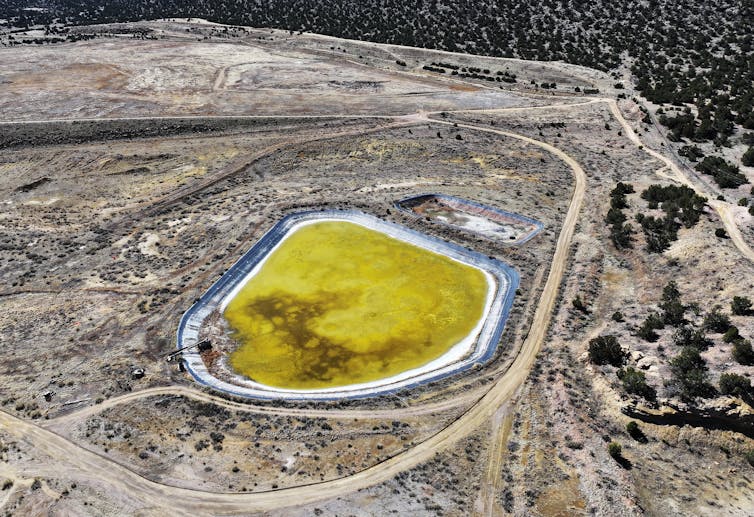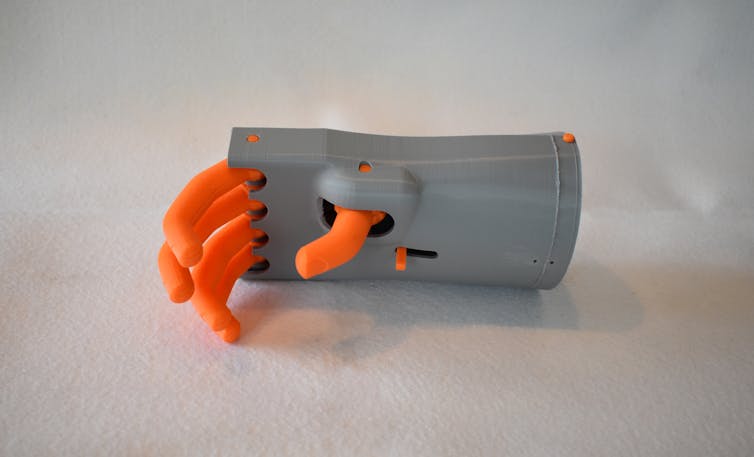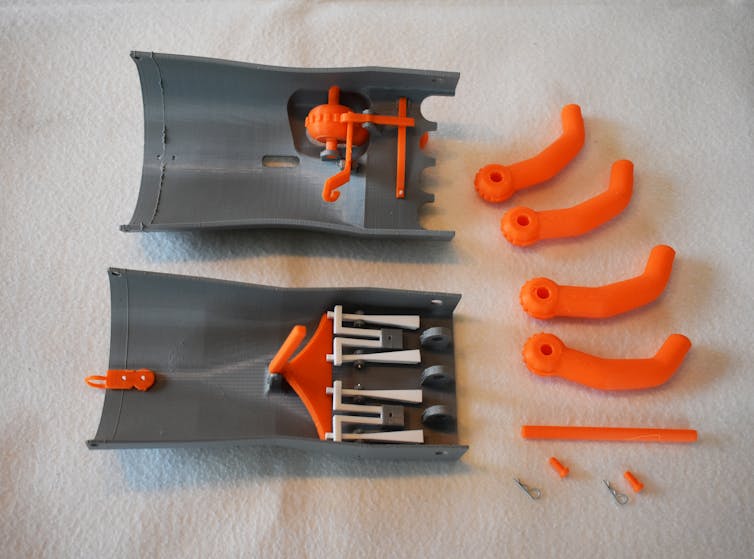Source: – By Stan Meiburg, Executive Director, Sabin Center for Environment and Sustainability, Wake Forest University

To understand the federal government’s true priorities, follow the money.
After months of saying his administration is committed to clean air and water for Americans, President Donald Trump has proposed a detailed budget for the U.S. Environmental Protection Agency for fiscal year 2026. The proposal is more consistent with his administration’s numerous recent actions and announcements that reduce protection for public health and the environment.
To us, former EPA leaders – one a longtime career employee and the other a political appointee – the budget proposal reveals a lot about what Trump and EPA Administrator Lee Zeldin want to accomplish.
According to the administration’s Budget in Brief document, total EPA funding for the fiscal year beginning October 2025 would drop from US$9.14 billion to $4.16 billion – a 54% decrease from the budget enacted by Congress for fiscal 2025 and less than half of EPA’s budget in any year of the first Trump administration.
Without taking inflation into account, this would be the smallest EPA budget since 1986. Adjusted for inflation, it would be the smallest budget since the Ford administration, even though Congress has for decades given EPA more responsibility to clean up and protect the nation’s air and water; handle hazardous chemicals and waste; protect drinking water; clean up environmental contamination; and evaluate the safety of a wide range of chemicals used in commerce and industry. These expansions reflected a bipartisan consensus that protecting public health and the environment is a national priority.
The budget process in brief
Federal budgeting is complicated, and EPA’s budget is particularly so. Here are some basics:
Each year, the president and Congress determine how much money will be spent on what things, and by which agencies. The familiar aphorism that “the president proposes, Congress disposes” captures the Constitution’s process for the federal budget, with Congress firmly holding the “power of the purse.”
EPA’s budget can be difficult to understand because individual programs may be funded from different sources. It is useful to consider it as a pie sliced into five main pieces:
- Environmental programs and management: the day-to-day work of protecting air, water and land.
- Science and technology: research on pollution, health effects and new environmental tools.
- Superfund and trust funds: cleaning up contaminated sites and responding to emergency releases of pollution.
- State and Tribal operating grants: supporting local implementation of environmental laws.
- State capitalization grants: revolving loans for water infrastructure.
The Trump administration’s budget proposals for EPA represent a striking retreat from the national goals of clean air and clean water enacted in federal laws over the past 55 years. In the budget document, the administration argues that the federal government has done enough and that the protection of gains already achieved, as well as any further progress, should not be paid for with federal money.
This budget would reduce EPA’s ability to protect public health and the environment to a bare minimum at best. Most dramatic and, in our view, most significant are the elimination of operating grants to state governments, drastic reductions in funding for science of all kinds, and elimination of EPA programs relating to climate change and environmental justice, which addresses situations of disproportionate environmental harm to vulnerable populations. It would cut regulatory and enforcement activities that the administration sees as inconsistent with fossil energy development. Other proposed changes, notably for Superfund and capitalization grants, are more nuanced.
These changes to EPA’s regular budget allocation are separate from changes to supplementary EPA funding that have also been in the news, including for projects specified in the Inflation Reduction Act and other specific laws.
Environmental programs and management
Funding for basic work to protect the environment and prevent pollution would be cut by 22%. The reductions are not spread equally, however. All activities related to climate change would be eliminated, including the Energy Star program and greenhouse gas reporting and tracking. Funding for civil and criminal enforcement of environmental laws and regulations would be cut by 69% and 50%, respectively.
The popular Brownfields program would be cut by 50%. Since 1995, $2.9 billion in federal funds have produced public and private investments totaling $42 billion for cleaning and redeveloping contaminated sites, and created more than 200,000 jobs.
A program to set standards and conduct training for safe removal of lead paint and other lead-containing materials from homes and businesses would be eliminated.
The administration has been clear that EPA will no longer do environmental justice work, such as funding to monitor toxic air emissions in low-income neighborhoods adjacent to industrial areas. This budget is consistent with that.
Science and technology
Scientific support functions would be cut by 34%. The Office of Research and Development would go from about 1,500 staff to about 500 and would be redistributed throughout the agency. This would diminish science that supports not just EPA’s work but that of organizations, industries, health care professionals and public and private researchers who benefit from EPA’s research.

RJ Sangosti/MediaNews Group/The Denver Post via Getty Images
Superfund and other trust funds
Superfund is by far the largest of EPA’s cleanup trust funds. It allows EPA to clean up contaminated sites. It also forces the parties responsible for the contamination to either perform cleanups or reimburse the government for EPA-led cleanup work. When there is no viable responsible party, Superfund gives EPA the funds and authority to clean up contaminated sites.
Prior to 2021, Superfund was funded through EPA’s annual budget. In 2021 and 2022, Congress restored taxes on selected chemicals and petroleum products to help pay for Superfund. During the Biden administration, EPA reduced the Superfund’s line in the general budget, with the expectation that the Superfund tax revenues would more than make up for the reduction. Administrator Zeldin, who has said that site cleanup is a priority, is proposing to shift virtually all funding for cleanups to these new tax revenues.
There is risk in this approach, however. The Superfund tax expires in 2031 and has raised less than Treasury Department predictions in both 2023 and 2024. In fiscal year 2024, available tax receipts were predicted to be $2.5 billion, but only $1.4 billion was collected. Future funding is uncertain because it depends on the amounts of various chemicals that companies actually use. Experts disagree on whether this is significant for the Superfund program. The petrochemical industry, on whom this tax largely falls, is lobbying for its repeal.
Funds to address leaks at gas station tanks would be cut nearly in half. Funds to clean up oil and petroleum spills would be cut by 24%.
State operating grants
The budget proposal seeks to reset the EPA’s relationship with state agencies, which implement the vast majority of environmental regulations.
EPA has long delegated some of its powers to state environmental agencies, including permitting, inspections and enforcement of regulations that govern air, water and soil pollution. Since the 1970s, EPA has helped fund those activities through basic operating grants that require minimum state contributions and reward larger state investments with additional federal dollars.
The proposed budget would eliminate all of those grants to states – totaling $1 billion. The document itself explains that federal funding over decades has totaled “hundreds of billions of dollars” and has resulted in programs that “are mature or have accomplished their purpose.”
States disagree. They note that EPA has delegated 90% of the nation’s environmental protection work to state authorities, and states have accepted that workload based on the expectation of federal funding. The states say reduced funding would greatly diminish the actual work of environmental protection – site inspections, air and water monitoring, and enforcement – across the country.
State capitalization grants
Since 1987, EPA has given states money for revolving loan programs that provide low-interest loans to state and local governments to clean up waterways and provide safe drinking water. The proposed budget would cut that funding by 89%, from $2.8 billion to $305 million.
These capitalization grants were originally envisioned as seed money, with future loans available as the initial and subsequent loans were repaid. But the need for water infrastructure continues to grow, and Congress has for many years allocated additional money to the program.
In protecting the environment, you get what you pay for. In past years, Congress has refused to accept proposed drastic cuts to EPA’s budget. It remains to be seen whether this Congress will go along with these proposed rollbacks.
![]()
Stan Meiburg is a volunteer with the Environmental Protection Network. He was an employee of the Environmental Protection Agency from 1977 to 2017.
i have worked at the US EPA twice. During the Obama Administration, i was first principal deputy to the Assistant Administrator of the Office of Air and Radiation and then Acting Assistant Administrator. During the Biden Administration, I was Deputy Administrator. I am also a volunteer with the Environmental Protection Network.
– ref. What Trump’s budget proposal says about his environmental values – https://theconversation.com/what-trumps-budget-proposal-says-about-his-environmental-values-258962
































